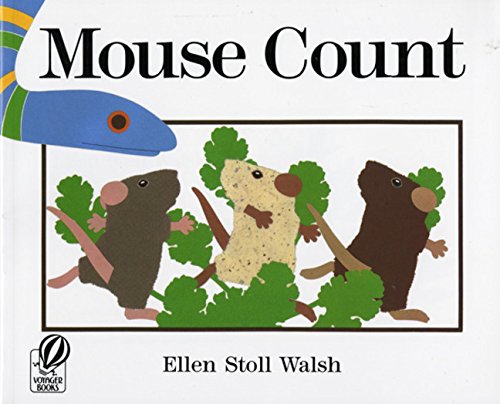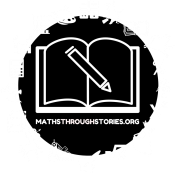In this blog post, Professors Pat McGuire and Grant Clayton (University of Colorado – Colorado Springs, USA) provide a brief summary of a recently published ten-week pre-kindergarten micro-curriculum, Booked on Math. This micro-curriculum includes ten strategically selected book (read-alouds) and supplementary lesson plans designed to support the development of pre-kindergartener’s conceptual understanding in mathematics. This blog post also includes a brief overview of the read-alouds leveraged and provides insight into the instructional design considerations for supplementary lesson plans. The post concludes with recommendations and next steps for researchers, practitioners, and parents. A version of this blog post is reported in the authors’ research article, titled ‘Booked on math: Developing math concepts in Pre-K Classrooms using interactive read-alouds’ which is published earlier this year in Early Childhood Education Journal.
Booked on math overview
In Mouse Count by Ellen Stoll Walsh, children follow the adventures of a group of mice and a snake in the meadow. The rhythm of the story and illustrations follows a glissando giving the story an easy to follow musical quality. Children are immediately engaged, and the short story can easily be re-read as children count forwards and backwards along with the adventures of the mice. A natural extension is to act out the countdown as a snake attempts to find the mice.
Parents and teachers understand firsthand the power of stories for children’s development of language and early literacy. Fewer make use of stories and read-aloud activities for the development of early numeracy and mathematical thinking despite the emerging body of work that explores the effects of interactive read-alouds on mathematics teaching and learning (Casey, Ekrut, Ceder, & Young, 2008; Clarke, 2002; Jennings, Jennings, Van den Heuvel-Panhuizen, & Iliada, 2011; Van den Heuvel-Panhuizen, Elia, & Robitzsch, 2016; Young-Loveridge, 2004). In the Mouse Count, preschool aged children learn to count forwards and backwards to ten. The Mouse Count is an example a story picture book used in the ten-week micro curriculum--Booked on Math--our team developed to support early numeracy and mathematical thinking. In this curriculum, students and teachers completed one read-aloud and associated lesson per week (10 total). Each lesson is composed of a story to be read-aloud, activities to reinforce the key concepts, and extension activities students and parents can do at home to reinforce learning.
Supplementary lesson plans
Supplementary lessons included in the Booked on Math micro-curricula follow an inquiry-based “5E” lesson framework developed by Bybee et al. (2006) where students engage with a challenging situation, then explore what the concept means, explain the new knowledge they gained through exploration, elaborate by applying this knowledge in a novel situation, and finally evaluate by reflecting on their learning. We design easy to follow lesson plans that support student learning through the 5E framework with Get Ready, Engage, Investigate, Discuss, and Extend cycle. There is a Make it Work at the end that supports students with varied skill development. Click here is the lesson plan and activities for Mouse Count.
During the micro-curricula development, we selected books from the National Association for the Education of Young Children's (NAEYC) recommended book list and other research-based early childhood curricula (e.g., MyTeachingPartner Mathematics and Science) that have demonstrated increases in student learning outcomes in pre-kindergarten mathematics and science classrooms through randomized controlled trials (Kinzie et al., 2014). Book readings were also chosen to reflect the four primary domains tested in the Teaching Strategies GOLD (TS GOLD) assessment. Mathematical domains include: (1) number concepts and operations; (2) spatial relationships and shapes; (3) comparison and measurement; and (4) patterns. These domains align with state standards for pre-kindergarten in most states (Neuman & Roskos, 2005). The full Booked on Math curriculum and TS Gold domain coverage by book reading is listed below:
Our study
We piloted Booked on Math in a pre-kindergarten center in the United States with seventy children (approximately 48 months old on average) across three classes. Teachers found the lesson plans easy to follow and were able to integrate Booked on Math into regular classroom activities. To test Booked on Math, some classes used the curriculum while the other teacher taught using their usual lessons. To measure the impact of the program, the school tested the children using the TS Gold assessment (The Center for Educational Measurement and Evaluation, 2011)—a typical preschool assessment of student learning in the United States—before and after Booked on Math. We found statistically significant differences in the areas of (1) quantifies, (2) shapes, and (3) spatial relationships on the TS Gold assessment after Booked on Math.
The three TS Gold areas that yielded statistically significant results for Booked on Math are both conceptual and visual in nature. Our hypothesis is that the book readings, associated images, and activities may have helped young students develop a stronger conceptual understanding in these constructs (in particular with the constructs of spatial relationships and shapes) when compared to the traditional teaching methods. This result is consistent with previous research that suggests an overreliance on auditory teaching methods (e.g., lecture or listening alone) are problematic for most learners and present significant barriers for visual-spatial learners.
Recommendations and next steps
We believe Booked on Math will help teachers—especially with those who have math anxieties or who spend little time teaching early numeracy—easily integrate mathematical thinking and concepts into their pre-kindergarten classrooms. The recommended extension activities can support parental involvement at home and increase communication between parent and teacher about early numeracy. Given the fact that many parents read to their children at home, Booked on Math presents an opportunity to support students’ early numeracy development through an the read-alouds they already do.
There is increasing evidence that read-alouds help develop early mathematical in preschool children. Booked on Math helps to extend the value of these readings by engaging students, teachers, and parents in reinforcing these key concepts in a systematic fun way. The 5E framework and lesson plan format can be adapted to other books as teachers identify new readings.
References
Bybee, R. W., Taylor, J. A., Gardner, A., Van Scotter, P., Powell, J. C., Westbrook, A., & Landes, N. (2006). The BSCS 5E instructional model: Origins and effectiveness. Colorado Springs, Co: BSCS, 5, 88-98.
Casey, B., Erkut, S., Ceder, I., & Young, J. M. (2008). Use of a storytelling context to improve girls' and boys' geometry skills in kindergarten. Journal of Applied Developmental Psychology, 29(1), 29-48.
Jennings, C. M., Jennings, J. E., Richey, J., & Dixon-Krauss, L. (1992). Increasing interest and achievement in mathematics through children’s literature. Early Childhood Research Quarterly, 7, 263-276.
Kinzie, M. B., Whittaker, J. V., Williford, A. P., DeCoster, J., McGuire, P., Lee, Y., & Kilday, C.R. (2014). MyTeachingPartner-Math/Science pre-kindergarten curricula and teacher supports: Associations with children's mathematics and science learning. Early Childhood Research Quarterly, 29(4), 586-599.
McGuire, P., Himot, B., Clayton, G., Yoo, Monica, & Logue, M. E. (2020). Booked on math: Developing math concepts in Pre-K Classrooms using interactive read-alouds. Early Childhood Education Journal. https://doi.org/10.1007/s10643-020-01073-1
Neuman, S. & Roskos, K. (2005). The state of state’s pre-kindergarten standards. Early Childhood Research Quarterly, 20(2), 125-145.
The Center for Educational Measurement and Evaluation (2011). Teaching Strategies GOLD Assessment System Technical Summary. The University of North Carolina at Charlotte.
Van den Heuvel-Panhuizen, M., & Iliada, E. (2011). Kindergartener’s performance in length measurement and the effect of picture book reading. ZDM Mathematics Education, 43, 621-635.
Van den Heuvel-Panhuizen, M., & Van den Boogaard, S. (2008). Picture books as an impetus for kindergartners’ mathematical thinking. Mathematical Thinking and Learning, 10, 341-373.
Young-Loveridge, J. (2004). Effects on early numeracy of a program using number books and games. Early Childhood Research Quarterly, 19, 82–89.
|
Grant Clayton is an Assistant Professor in the Department of Teaching and Learning in the College of Education at the University of Colorado – Colorado Springs. His research interests include postsecondary readiness, school choice, teacher labor market, and causal methods. Prior to joining the faculty, he was a secondary teacher and International Baccalaureate Coordinator.
|
|
Pat McGuire is an Associate Professor in the Department of Teaching and Learning focusing on STEM education. Pat also serves as the College of Education Co-Director of UCCSTeach, an inquiry-based program designed to prepare the next generation of secondary mathematics and science teachers. His research interests lie in the intersection of curriculum, instructional technology and STEM education. Before joining the UCCS faculty in 2010, Pat worked as a high school mathematics teacher in Pittsburgh, PA and as a researcher at Carnegie Mellon University.
. |



